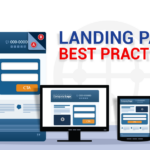Is UX basically about plan, and simply making a wonderful client interface? Or then again is it more about arranging and system? Actually, it includes everything… And afterward some more.
At the point when individuals ponder UX, they consider the UI (UI): that is all that you see, contact, and communicate with on screen. It’s the manner in which a site looks, or what you’re tapping at on your telephone. Individuals could likewise ponder client experience (CX), which is the feeling of all of the dependability you’ve developed, the inclination individuals have of working with you, and the straightforwardness with which they make it happen.
UX fits in this. It’s an approach to understanding the CX that you need to make, the experience that you’re attempting to get to, and afterward matching it up to a UI that is really successful.
What does UX convey?
UX expects to convey computerized resources that address clients’ issues and furthermore serve business objectives. As a matter of fact, you can consider it the space in which computerized resources, client requirements, and business objectives converge.
The advanced resources
The computerized resources, for example, a page or an application interface, are the most unmistakable expectations from a UX project. These ought to be created in light of strong client research. Really at that time can you model and test them with client gatherings.
The client
A critical objective of UX is to make life as simple as feasible for the client. To this end focusing on the voice of the customers is so significant. Ensure you comprehend what they need. Carry them into the navigation and creating process.
The business objectives
While the client is at the focal point of any UX project, you likewise need to consider the business objectives. Creating items disregarding business needs is just about as useless as creating items that don’t address client issues.
You really want to find a fine harmony between what the client says they need and what the business needs to sell them. Assuming that you center exclusively around what clients say they need, you might pass up valuable chances to sell them items or administrations they hadn’t even pondered.
When would it be advisable for you to ponder UX?
You and your image could have to zero in on UX when you’re either sending off another item or going through some time of progress.
While sending off another item, or refreshing a current one, organizations for the most part have UX front of psyche. They might be watching what their rivals are doing and trying to convey a better UX than their own clients. Most organizations presently comprehend the benefit of financial planning time and exertion on UX from the get-go in the advancement cycle.
In the event that an organization is going through a time of progress, say when it appears to be the market is moving without them, or their rivals are surpassing them, this can be a snapshot of frenzy for them. They see that something’s messed up, and they bring in UX specialists to fix it, like bringing in the handyman when they notice a break. Nonetheless, they might have to look past the break and rethink their entire pipes framework!
UX exploration can give significant bits of knowledge into what clients truly need and how the organization needs to develop to live up to changing clients’ assumptions. For instance, on the off chance that an organization’s change rates are a concern, a UX expert could dig further, taking a gander at why clients are leaving their trucks or why there are not many bringing customers back.
A moves toward a compelling UX technique
-
Distinguish the issue
UX consultancy frequently starts when an organization has seen an issue, like elevated degrees of client grievances. The UX consultancy is gotten as an investigator at this stage, entrusted with fixing a prompt issue. When you’ve obviously distinguished your concern, you can do whatever it takes to address it.
-
Have an obviously characterized objective
Every single effective task and systems start with a plainly characterized objective. This gives concentration to all endeavors and guarantees time isn’t squandered on immaterial errands.
In this way, toward the beginning of your UX venture, put forth your objective. All in all, what steps do you need to take to resolve the issue you’ve recognized?
In advanced showcasing, your UX objective is probably going to make better computerized items that will connect with clients (and, at last, drive deals). Also, to do this, you need to advance however much you can about your clients. When you have vigorous client focused information, you can foster objectives that line up with clients’ necessities. Figure out how to do investigate you want utilizing our advertising research layout.
-
Investigate your rivals
Carve out opportunity to appropriately dissect what rivals in your space are doing. Go through a client venture on your site or application, and afterward go through a comparable excursion on your rivals’ sites and applications. Survey how well you’re doing contrasted with your rivals.
Center around five or six of your rivals. Then set benchmarks to look at how you and the contenders are performing at various touchpoints in the client venture, for example, in virtual entertainment channels. Do you have to change your connection point? Do you have to work on your client process?
Envision you’re a client going through this large number of various sites and applications. Which one could you pick?
-
Examine the UI
At the point when individuals consider UX, they frequently start with the UI (UI). Furthermore, that is not a terrible spot to begin.
A very much planned UI is probably going to convey great UX. So ponder the format of your connection point. How natural is it? How simple is it to cooperate with? Does it address the clients’ requirements? (What’s more, is it better than your rivals’ connection points?)
While planning or adjusting your point of interaction, make sure to check out at it through the eyes of your clients.



